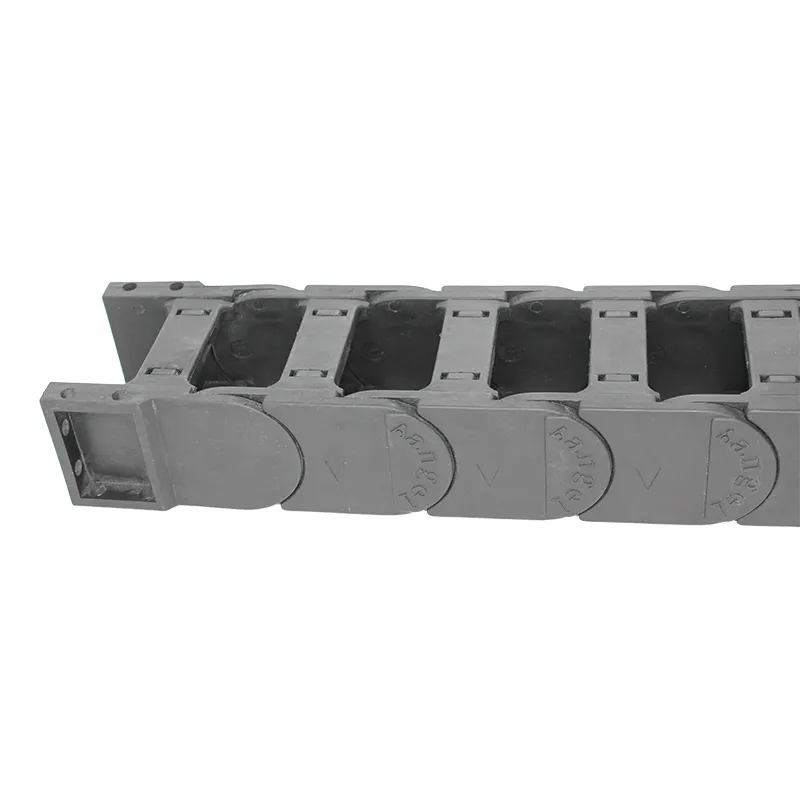cable carrier systems
Cable Carrier Systems An Overview
In the realm of modern infrastructure and industrial applications, cable carrier systems, also known as cable management systems, play a crucial role in ensuring the safety and efficiency of electrical and data transmission. These systems are designed to support, organize, and protect various types of cables and hoses in diverse environments, from factories to data centers. This article explores the significance, components, and applications of cable carrier systems.
Understanding Cable Carrier Systems
At its core, a cable carrier system consists of a series of interconnected links that create a flexible channel for cables and hoses. These carriers are typically made from materials such as plastic, steel, or aluminum, which provide durability and resilience. The primary function of a cable carrier is to prevent tangling and damage to cables during movement, especially in dynamic applications where cables are frequently pulled or pushed.
Cable carrier systems come in various shapes and sizes, enabling them to accommodate a wide range of applications, from light-duty equipment to heavy machinery. They can be customized to fit specific requirements, including the number of cables, the types of materials used, and exposure to environmental factors such as heat, chemicals, or moisture.
Key Components of Cable Carrier Systems
1. Track The track is the foundational element of a cable carrier system, providing a pathway for the carriers to move smoothly. This component is engineered to reduce friction and wear, ensuring longevity.
2. Carrier Links These are the individual segments that connect to form a continuous chain. They are designed to open easily for cable installation and maintenance.
3. Mounting Brackets and Supports These components secure the cable carrier to a fixed structure, ensuring stability and proper alignment during movement.
4. Guide Shoes In certain systems, guide shoes are employed to assist in the smooth operation of the carriers, particularly in high-speed applications. They help minimize wear and improve cable life.
cable carrier systems

Benefits of Cable Carrier Systems
The advantages of utilizing cable carrier systems are numerous. Firstly, they significantly enhance safety by minimizing the risk of cable damage, which can lead to electrical hazards, equipment failure, or data loss. Secondly, cable carriers streamline operations by keeping cables organized, reducing clutter, and simplifying maintenance routines. This organization is particularly valuable in environments with complex machinery and extensive cabling.
Another noteworthy benefit is the flexibility that cable carrier systems provide. They can be designed to follow intricate paths and can adapt to various motion types, whether linear, rotational, or even multi-axis. This adaptability is essential in industries such as robotics, automotive, aviation, and telecommunications.
Moreover, the proper use of cable carrier systems can lead to cost savings over time. By preventing cable damage and reducing the need for repairs, companies can significantly decrease their operational costs. Additionally, a well-organized cable system can enhance productivity by allowing for faster maintenance and troubleshooting.
Applications in Various Industries
Cable carrier systems find applications in numerous sectors. In the manufacturing industry, they are commonly used in automated production lines, CNC machines, and robotic arms. In the telecommunications sector, cable carriers help manage the intricate networks of data cables essential for internet connectivity.
The construction and mining industries also leverage cable carrier systems to handle power and communication lines in harsh conditions. Furthermore, they are vital in transportation systems, including railways and airports, where they manage cables for signaling and communication equipment.
Conclusion
In summary, cable carrier systems are an indispensable component of modern industrial and infrastructural applications. Their ability to protect, organize, and facilitate the movement of cables ensures the efficiency and safety of electrical and data systems across various sectors. As technology advances, the design and functionality of cable carrier systems will continue to evolve, playing a pivotal role in the ongoing development of automation and connectivity.








